Karnataka
About Karnataka
Ranked the 4th most popular tourist state in the country, Karnataka has a bouquet of attractions to offer you. Expanded from Belgaum in the North to Bangalore in the south, it has something to offer to everybody; from beautiful landscapes to rich cultural heritage, serene beaches and scrumptious food, Karnataka is indeed a world in itself! The Malayalis, the Tamilians, Konkanis, Kannadigas, even the Muslims and Christians have made Karnataka their home.
It has the second highest number of protected monuments in India, Hampi being one which houses the maximum of them, was the capital of Vijayanagar Empire. The world’s largest monolith structure, the statue of Lord Gomteshwar in Shravanabelagola sees tens of thousands of pilgrims during Mahamastakabhisheka festival every 12 years. Apart from history, Karnataka is also rich in nature’s bounty and wildlife. It has 5 National Parks and over 25 wildlife sanctuaries of which Bandipur and Nagarhole national parks are most famous. Bengaluru, the capital of the state and the “Silicon Valley of India” is known as the city of startups and IT companies and attracts thousands of tourists every year. Coorg is one of the top destinations in Karnataka for its coffee plantations. Mysore, famous for the Mysore Palace, Hampi, famous for the ruins of Vijayanagara Empire and Chikmagalur, a hill station in the Malnad region of Karnataka are a few other popular places among the tourists.
Coorg

Located amidst imposing mountains in Karnataka with a perpetually misty landscape, Coorg is the place to be for all nature lovers. This popular coffee producing hill station is not only popular for its beautiful green hills and the streams cutting right through them. It also stands as a popular destination because of its culture and people. The Kodavas, a local clan specialising in martial arts, are especially notable for their keen hospitality.
Coorg, officially known as Kodagu, is the most affluent hill station in Karnataka. It is well known for its breathtakingly exotic scenery and lush greenery. Forest covered hills, spice and coffee plantations only add to the landscape. Madikeri is the region’s centre point with all transportation for getting around starting from here. On a visit to Coorg, cover the beautiful towns like Virajpet, Kushalnagar, Gonikoppal, Pollibetta, and Somwarpet, and experience the beautiful concept of “homestays” to make your experience more memorable!
Things to Do
Abbey Falls
Abbey Falls, also known as Abbi Falls, is located around 10 kilometres away from the town of Madikeri and is one of the most popular tourist attractions in and around Coorg. The water cascade coming down from the cliff from a height of 70 feet provides a spectacular scene to behold. Nestled within the lush greenery which is typical to the sceneries of Western Ghats, the waterfalls attract hundreds and thousands of people throughout the year – especially nature lovers and photographers. The waterfall is located between private coffee plantations with stocky coffee bushes and spice estates with trees entwined with pepper vines. There is an over-bridge that hangs opposite of the falls, from where the most picturesque scene of white foams gushing down the ridge can be seen, captured and remembered. The flow of the falls leaves a significant amount of water spray on those who stand on the bridge for some time.
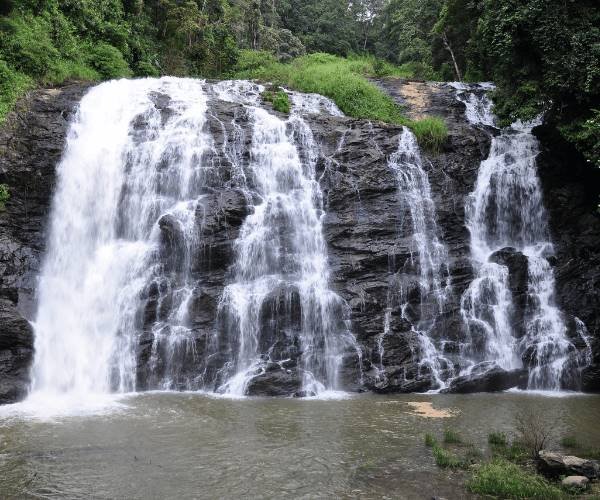
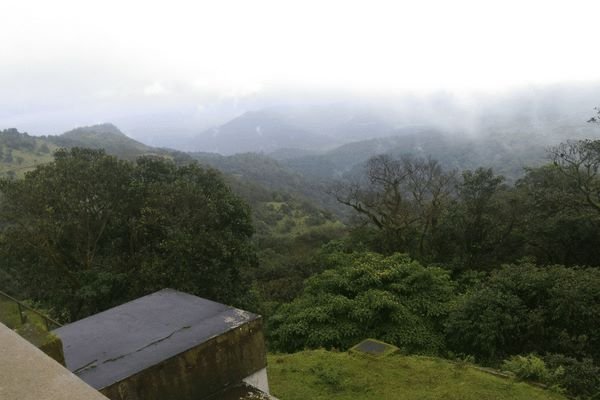
Talakaveri
Talakaveri is the source of the river Kaveri, located on the Brahmagiri hill (not to be confused with the Brahmagiri range further south) near Bhagamandala in Kodagu district, Karnataka. Kodavas erected a tank which is now considered as its origin. It is believed that the river originates as a spring feeding a tank or a Kundike and then flows underground to re-emerge as Kaveri some distance away. The place has a temple dedicated to the Goddess Kaveriamma is located next to the tank and bathing in it on special occasions is considered holy.
Brahmagiri Wildlife Sanctuary
The Brahmagiri Wildlife Sanctuary covers an area of 181 square km and has got its name from the Brahmagiri Park which is the highest peak with a height of 1608 m. The primary vegetation of the sanctuary includes evergreen and semi-evergreen forests, shoal forest patches in grasslands and bamboos. The sanctuary was established in the year 1974 and is surrounded by plantations of coffee and cardamom.
Some interesting birds one can spot in the place include black bulbul, Malabar trogon, and emerald dove. Cobra, python and king cobra are some reptiles which can be easily spotted. Brahmagiri Wildlife Sanctuary is also home to many animals including macaques, gaurs, elephants, tigers, leopard, cats, wild pigs, Nilgiri langurs and sloth bears. It is a famous attraction visited by tourists almost throughout the year. It is also famous among the trekkers. It is said by the locals residing there that seven sages meditated on the top of the hill.
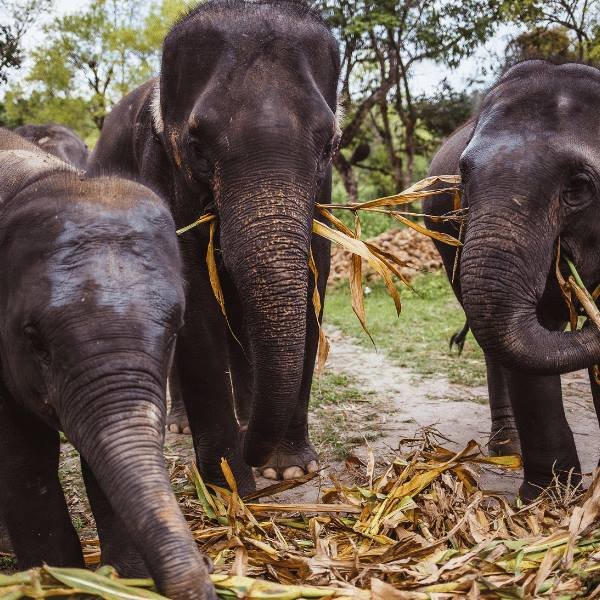
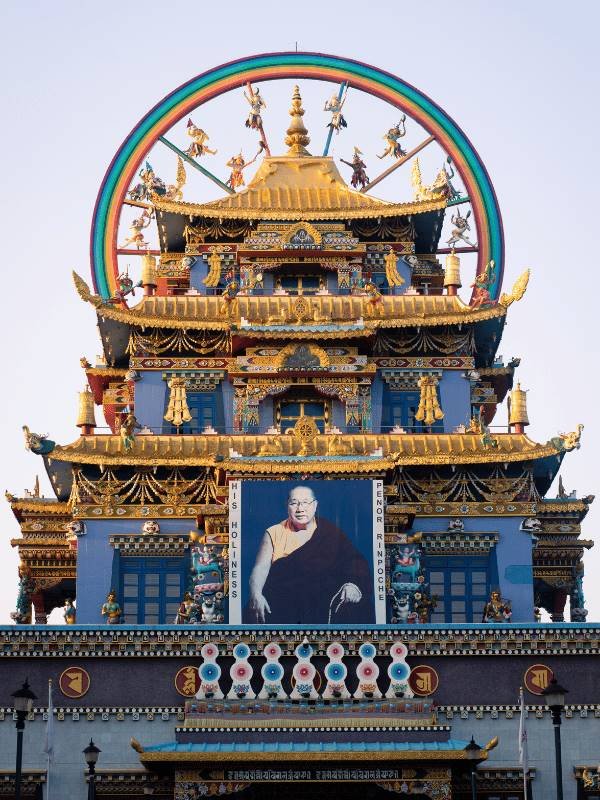
Golden Temple (Namdroling Monastery)
Namdroling Monastery, situated at a distance of 34 km from the Coorg, is the largest teaching centre of the school of Tibetan Buddhism known as Nyingmapa. Popularly known as the ‘Golden Temple’, the Namdroling Monastery holds some excellent examples of Tibetan architecture and artwork, as seen with the elaborately decorated temple tower and ornate outer walls, intricately adorned with beautiful murals. It is spread over an area of 80 square feet and was built from Bamboo which was donated by the Indian Government to the Tibetans in exile. Today, it houses many auxiliary structures like educational institutions and a hospital, in addition to being home to about 5,000 members of the Sangha community.
Thegchog Namdrol Shedrub Daryeling is the full name of the Namdroling Monastery. The foundation for this majestic monastery was laid down in 1963 by His Holiness Pema Norbu Rinpoche, the 11th throne-holder of the Palyul lineage of the Nyingma School of Tibetan Buddhism, following his exit from Tibet. The initial structure was made of bamboo and covered an area of 80 sq feet. The current 80 sqm area that the temple holds is thanks to the generosity of the Indian government, who donated the land to the Tibetan refugees who settled in the area. Inside, one has the privilege of witnessing the enormous 40 feet high golden statues of Guru .
Hampi

Hampi, the city of ruins, is a UNESCO World Heritage Site. Situated in the shadowed depth of hills and valleys in the state of Karnataka, this place is a historical delight for travellers. Surrounded by 500 ancient monuments, beautiful temples, bustling street markets, bastions, treasury building and captivating remains of Vijayanagar Empire, Hampi is a backpacker’s delight. Hampi is an open museum with 100+ locations to explore and a favourite way to see the city from the perspective of its history.
Hampi was the capital of the Vijayanagar empire around 1500 AD, and by some accounts, the second largest city in the world at that time. Over the next centuries it fell out of importance, and now you can explore the ruins of a lot of temples and other structures spread out over a vast area. The terrain around Hampi is as mysterious as the ruins itself – the city is surrounded by boulders of different sizes, and you can climb to the top of them with a little effort to get a stunning view of the entire city and the geography. It is located on the banks of the Tungabhadra River. Famous for its massive, beautifully carved temples, especially the Virupaksha Temple, dedicated to the patron deity of the empire.
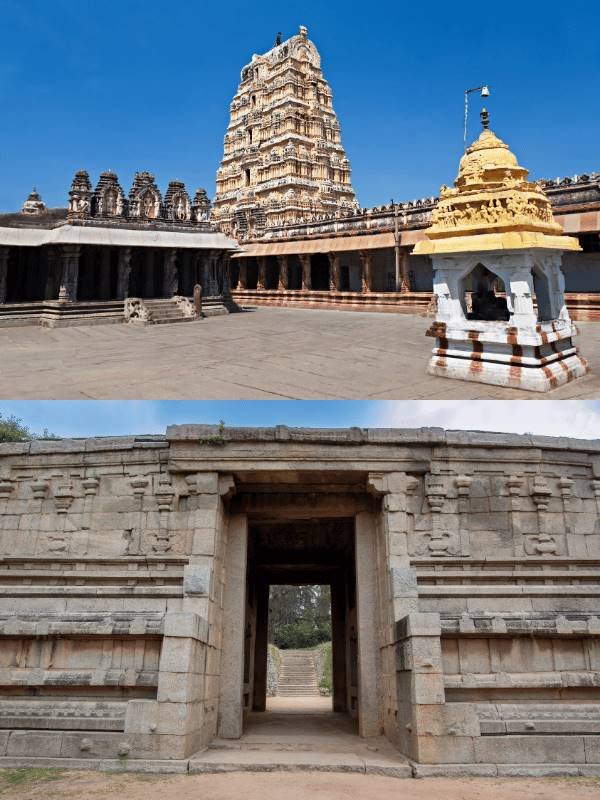
Virupaksha temple (or Prasanna Virupaksha temple)
The Virupaksha temple (or Prasanna Virupaksha temple) is located on the banks of the Tungabhadra river at Hampi. Built during the 7th century, the beautiful architecture and history of the temple have made it a UNESCO World Heritage site. The temple is abode to one of the forms of Lord Shiva called Lord Virupaksha. While it is located at present-day Hampi, it was once a smaller shrine in the middle of the ancient and majestic Vijayanagara empire. You will find beautiful stone inscriptions dating back to the 7th century on the walls of the temple as proof of its rich heritage. Architecture-lovers and history-buffs, do visit the temple when you are in Hampi!
The temple has tall towers or gopurams acting as gateways to the inner sanctums, as is usually seen in temples of south Indian style architecture. The gopurams lead to many inner corridors and halls, all decorated with ornate stone-work. The sculptures depict mythological stories of numerous Gods and Goddesses. The main deity of the temple is Lord Virupaksha, but it is also abode to few other Hindu deities too. While many devotees visit the temple during festival seasons like the Car Festival, it is otherwise less crowded.
Vithala Temple
The most impressive structure in Hampi, the Vithala Temple dates back to the 16th century and is a truly splendid example of rich architecture. The famous stone chariot, which has become an iconic symbol of the architecture of Hampi, is located inside the premises of this temple.
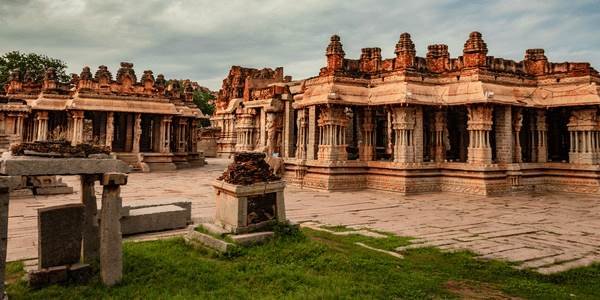
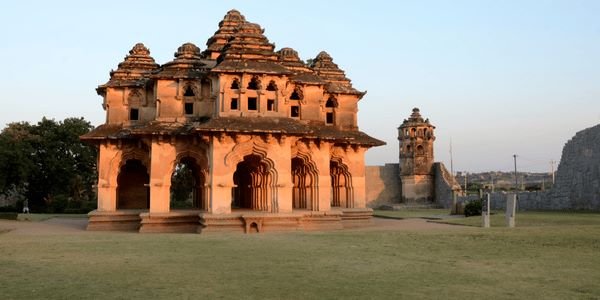
Lotus Palace
The most impressive structure in Hampi, the Vithala Temple dates back to the 16th century and is a truly splendid example of rich architecture. The famous stone chariot, which has become an iconic symbol of the architecture of Hampi, is located inside the premises of this temple.
Yantradharaka Hanuman Temple
On top of the Anjaneya Hill, at a distance of 2 kilometres from the Virupaksha Temple, the beautiful Yantradharaka Hanuman Temple also known as the Monkey Temple is present inside a cave. The temple being 500 years old is dedicated to Lord Hanuman. Sri Vyasaraja, who was the Rajaguru of the Vijayanagara Kingdom and a Dwaita philosopher, was the one to install the idol of Lord Hanuman in the temple. Being one of the most famous attractions of the Anjeyanadri Hill, the Monkey Temple is considered as a sacred spot for Hindus.
One has to climb 570 steps to reach the temple since it is located on top of the hill. Though the climb is steep, the beautiful views and the pleasant air make up for the climbing. One is also likely to come across aged people climbing up with energy and devotion. There is a small temple just 5 minutes away from the Yantrodharaka Temple which is dedicated to an incarnation of Lord Vishnu, i.e. Lord Srinivasa.
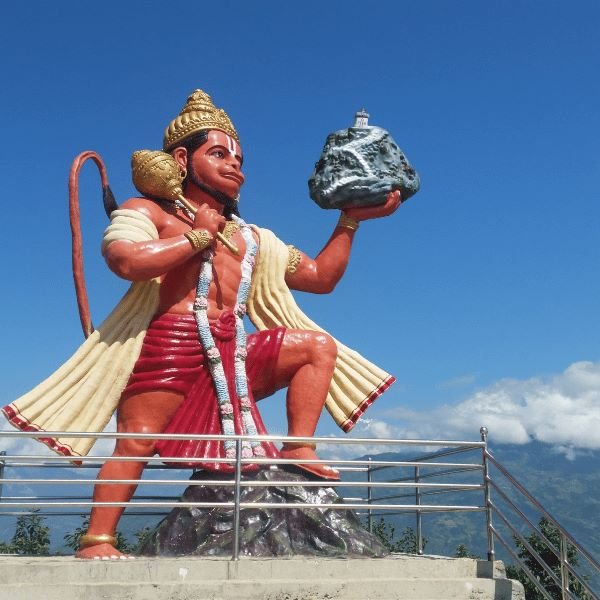
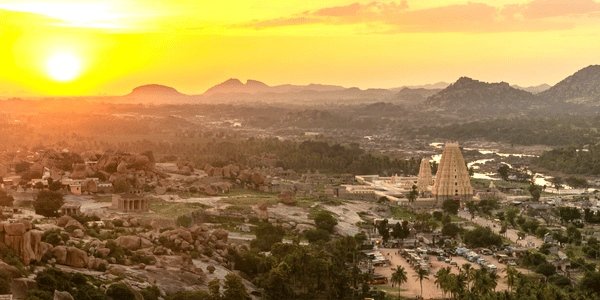
Hampi Bazar
Also known as the Virupaksha Bazaar, the Hampi Bazaar is the place to go to pick up knick-knacks, souvenirs, cheap clothes and trinkets to remember your trip to Hampi by. Situated right in front of Virupaksha temple, hence its alternate name, this bazaar which stretches for over a kilometre long is one of the main landmarks of Hampi. From embroidered shawls, fibre handicrafts, to stone carvings, this is the place to pick up anything Hampi-related. The Hampi Utsav which happens every November is also a big tourist draw and should be noted.
Chikmagalur
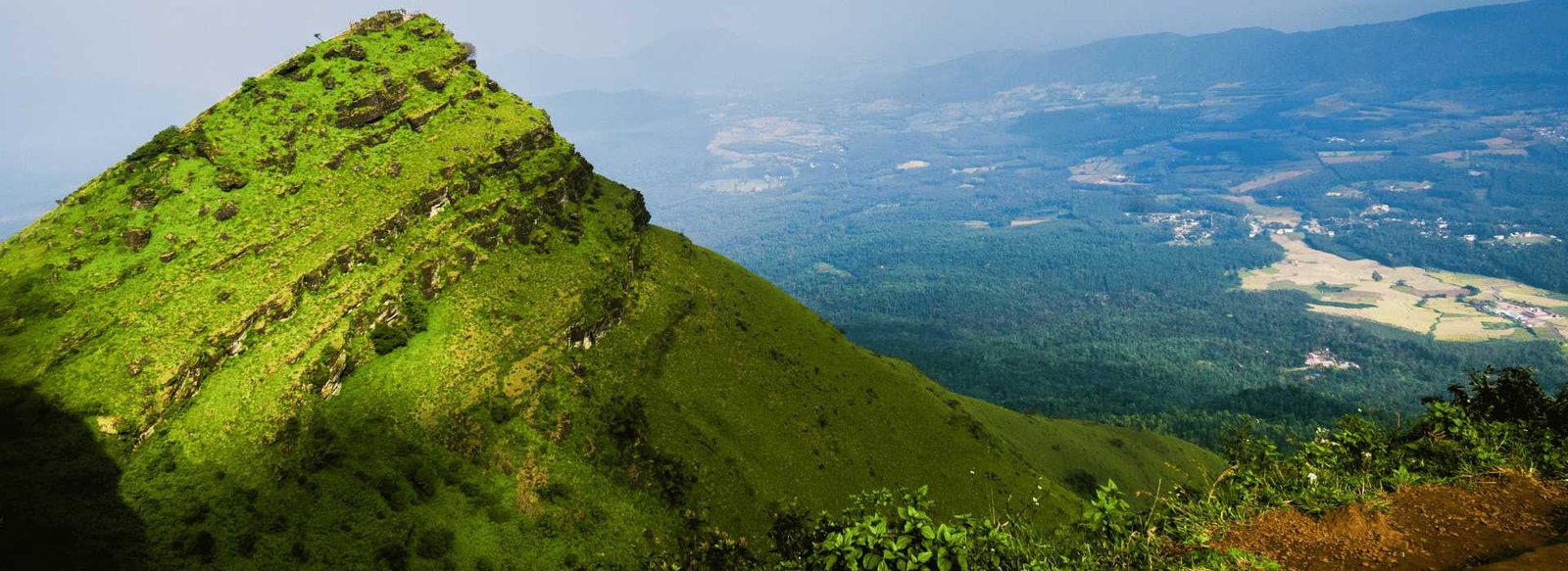
Popularly known as the ‘Coffee Land of Karnataka’, Chikmagalur is situated in the foothills of the Mullayangiri Range and is one of the most beautiful hill stations in Karnataka. Chikmagalur has a perpetual fragrance of coffee lingering in the air with it plenty of coffee plantations. Famous for its tall mountains, lush green forests and its tranquil environment (apart from its coffee production), Chikmagalur is a very popular tourist destination and is a quick retreat for the people of Karnataka.
Being the largest producer of coffee in the country, Chikmagalur is mainly all about its coffee. So if you’re a coffee enthusiast as well as a nature lover, taking a walk through one (or a few) of the numerous coffee plantations in the city is a must-do activity. Many of these coffee estates not only allow visitors to take guided tours through the plantations, but they also provide home-stays right within the estates, so you can literally wake up to and end your day with the smell of coffee in the air.
Chikmagalur is a very popular trekking spot and boasts of many incredible trekking trails, such as the Mullayangiri trek, the Kemmanagundi trek, and the Baba Budangiri trek. Mullayangiri is the highest peak in all of Karnataka and is the best place to get a perfect view of the sun rising from behind the mountains.

Kudremukh National Park
A UNESCO World Heritage Site, the Kudremukh National Park is an extremely famous tourist spot in Chikmagalur, given the various sightseeing options as well as the outdoor activities, organized here. Safaris are carried out, where the tourists can experience the flora and fauna in their natural habitat. In a particular non-restricted section of this park, trekking can also be enjoyed by the visitors.
Mullayanagiri
Perched at an altitude of 1930 m above the sea level, Mullayanagiri peak is located in the Baba Budan Giri Range of Western Ghats and is just 45 minutes from Chikmagalur. It serves as the highest peak between the Nilgiris and the Himalayas offering its visitors a peaceful getaway with temperature ranging between 20 – 25 degrees Celsius. Known for its serene ambience and nature’s raw beauty, this peak is adorned with verdant grassland, rugged rocks, and a good trek path is also quite popular among adventure lovers. Mullayanagiri is also known for coffee plantations that are situated nearby. Mullayanagiri is best known as a hub for adventure enthusiasts, especially trekkers as this destination is adorned with perfect trek trails. The starting point of this 4 km trek is Sarpadhari which is a steep trail.
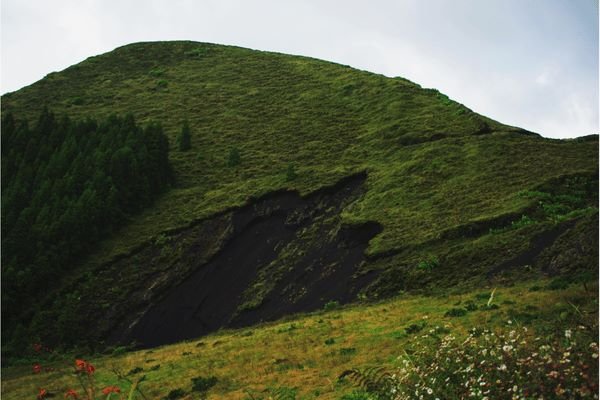
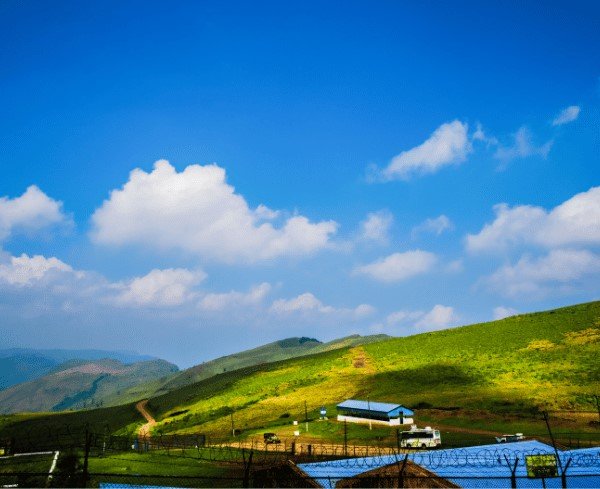
Baba Budangiri
To the north of Chikkamagalur district of Karnataka, lies the Baba Budan Range of the Western Ghats of India. Baba Budangiri is a mountain in the Baba Budan Range and is renowned for its shrine to the Sufi Saint, Hazrat Dada Hayat Khalandar (also known as Baba Budan). This is a famous pilgrim site for both Hindus and Muslims and is often flocked by travellers. aba Budangiri Hills are famous for their unique forest range in addition to hiking and trekking. Mullayanagari and Baba Budangiri have an amazing trekking trail in between. In addition to this, all the adventure lovers can hike through the forest to see the ancient shrine of Deviramma Betta. Sitalayanna Giri offers picturesque views of the surrounding mountain ranges. The most well-known trekking trails include- Baba Budangiri to Mullayanagri of 12 km, Budangiri to Gaalikere of 4 km, Budangiri to Manikyadhara Falls of 7 km, and from Attigudi Junction to Baba Budangiri of 6 km.
Bhadra Wildlife Sanctuary
Covering a vast area of over 490 sq.kms, the Bhadra Wildlife Sanctuary is located only 38 km west of the Chikmanglur town in Karnataka. Surrounded by hills of the Western Ghats on all sides, the view of the Bhadra Wildlife Sanctuary looks like a scene right out of a movie! The serrated mountains loom in the distance as the mountain peaks pierce the sky. The heaven touching apex of the mountains acts like a crown to the massive Bhadra Wildlife Sanctuary.The tanning brown forest leaves the onlooker in awe of the majesty of the massive trees, the diversity of the flora and the intricacies of the landscape. The sparkling Bhadra River passes through this sanctuary; hence giving it its name, Bhadra Wildlife Sanctuary. The river is a major source of water in the sanctuary.
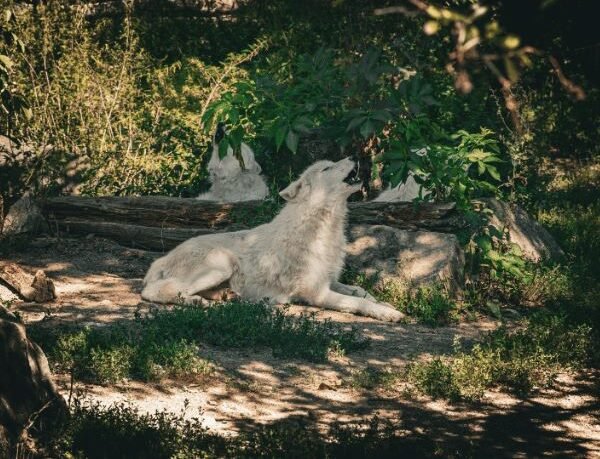

Rafting in Bhadra River
Located in Karnataka, Chikmaglur is a haven for adventure-seekers. It is situated 45 kms from Bhadra River which is equidistant from well-known hill stations and wildlife regions in the Western Ghats such as Sakleshpur, Kudremukh, Charamadi Ghats. River Bhadra originates in the Western Ghats and flows across Deccan Plateau through the Bhadra Wildlife Sanctuary providing rafters with a spectacular view of the lush greenery of the Western Ghats, quaint villages and plantations. It is fed by the tributaries Somavahini, Thadabehalla and Odirayanahalla. The rapids span out over a distance of 8 km and the rafting activity takes 1.5 hours to complete.
Bengaluru
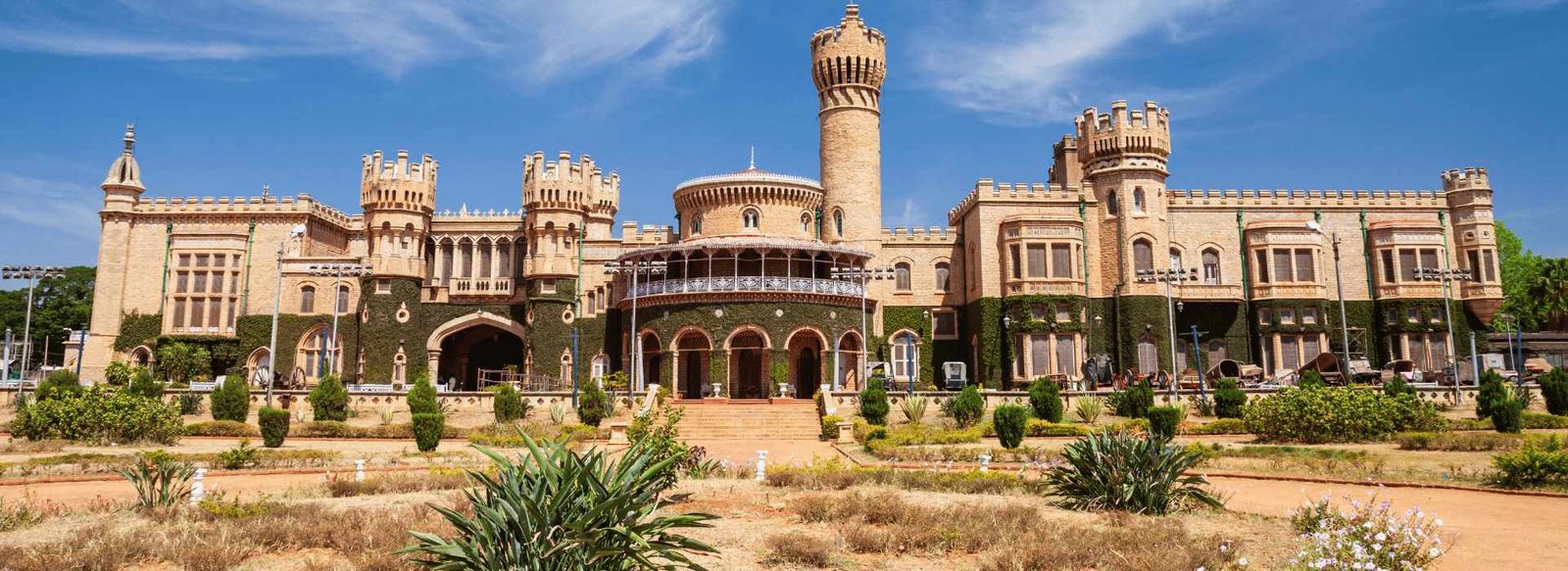
Having evolved gradually from being the Garden city to the Silicon Valley of India, Bangalore is India’s third-largest city. Bangalore is loved for its pleasant weather, beautiful parks and the many lakes here. Bangalore is renowned for its eateries, street food corners, quirky cafes, coffee roasters and pubs dotting every corner of the city, serving cuisines from all over the world. Brunches, buffets, burgers, rooftop cafes, late-night eats – Bengaluru has it all. But just like every big city, the unprecedented growth of IT in Bangalore has reshaped quite a few things including rising temperatures, polluted lakes and heavily congested roads, especially in the newer areas. Aside from the central business and commercial districts (and the roads leading up to them), the neighbourhoods of Bangalore are mostly quiet and serene, especially the older parts of the city like Jayanagar and J.P Nagar.

Bangalore Palace
An epitome of great architecture and beauty, The Majestic Bangalore Palace preserves in it the spice of old regal opulence. Currently the central attraction in Bangalore, the palace was built in the year 1878. Chamarajendra Wadiyar’s British Guardians bought the original property in 1873 from the principal of Bangalore Central High School, Rev, J Garret, from his funds. The palace is extraordinarily vast and spread across 45,000 square feet. A mixture of Tudor and Scottish Gothic architecture have resulted into the grand palace that we see today.The wooden structure of the palace along with the beautiful carvings both inside and outside showcases the royal culture in different ways.
Apart from being a major tourist destination, the palace is a host to different cultural events, rock shows, and marriages. As per beliefs, King Chamarajendra Wadiyar drew his inspiration for building the palace from the Windsor Castle of London. The granite seats decorated with fluorescent blue ceramic tiles on the ground floor, a fairy tale Ballroom, the famous painter Raja Ravi Varma’s paintings, vine-covered walls, and the Durbar Hall on the first floor come together to form the prepossessing Bangalore Palace. A visit to the palace gives you a chance to witness the elegant and lavish splendour of one of the most powerful dynasties of South India. An audio tape is available inside the Palace, both in Hindi and English, to help the people having language issues, understand its history better.
Lalbagh Botanical Garden
Lalbagh Botanical Garden is located in Bangalore and is nationally and internationally renowned centre for botanical artwork, scientific study of plants and also conservation of plants. A haven for all nature lovers, Lal Bagh covers an area 240 acres in the heart of the city and has nearly 1,854 species of plants. It was commissioned by Hyder Ali in 1760 and completed by his son Tipu Sultan. The garden features rare plants of French, Persian and Afghani origin and has attained the status of a Government Botanical Garden. The Lal Bagh Rock which is over 3000 million years old is found here and is a major tourist attraction.
This botanical garden, a delight for photographers, also consists of the famous glass house where an annual flower show is held every year and is also a home to an aquarium and a lake. Tipu Sultan brought in imported trees and plants from countries all over the world and planted them here and today, Lalbagh Botanical Garden has one of the world’s largest collection of rare plants. In addition to being rich in foliage, this garden also houses a number of birds such as Myna, Parakeets, Crows, Brahminy Kite, Pond Heron, Common Egret and Purple Moor Hen.
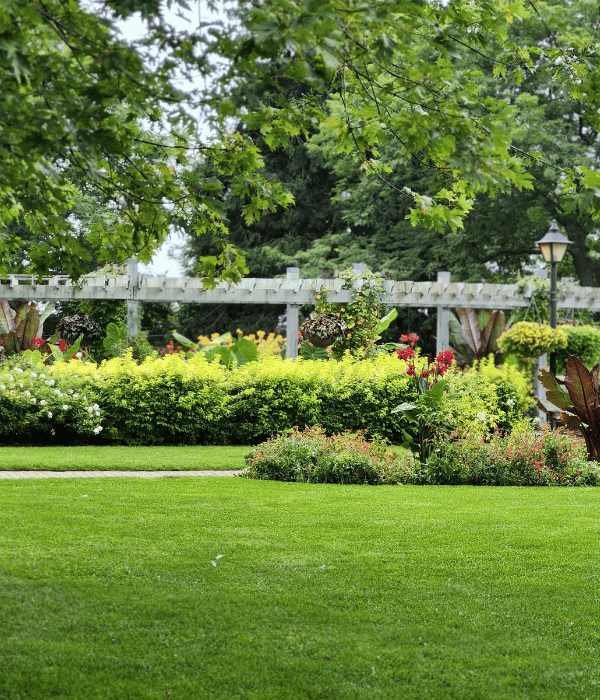
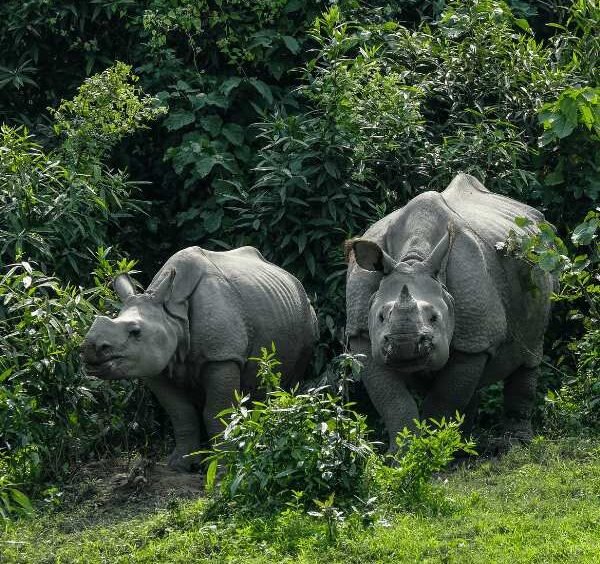
Bannerghatta National Park
Located 22 km away from Bangalore, the Bannerghatta National Park is a sanctuary for a large variety of flora and fauna. Spread over a massive area of around 104.27 sq. km, this national park was established in the year 1971. The park itself has a number of establishments within its confines, which includes the country’s first butterfly park as well.
Other attractions here are ten Reserve Forests of Anekal Range of the Bangalore Forest Division, an aquarium, a zoo, Children’s park, Crocodile Farm, Snake Park and Prehistoric Animals’ Park. What’s more, you can get up close and personal with the wondrous wildlife here by the means of a jungle safari, which is a popular activity to pursue here. The best part about Bannerghatta National Park is the small well-defined zones for animals that almost guarantees that you will spot the animals. People go in caged vehicles (buses/safari).
UB City Mall
Located in the CBD (Central Business District) in Bangalore, this luxury mall is the one-stop destination for all your high-end brand needs. Assimilation of four towers as a whole, it is spread over a mind-boggling area of 13 acres. The place takes care of all your exclusive needs, whether it is shopping at some high-end store, ultra-fine dining, or even taking a Spa after a long day of work, this place has it all. The place is home to all the luxury beauty, shoes, jewellery, bags and fashion brands from all around the globe, where Louis Vuitton, Estee Lauder, Rolex, Burberry, Jimmy Choo and Canali are to name a few. Various events are also timely organised for all the visitors to experience the best of everything. The dining options here are some of the best in the world and are a bit on the higher budget as well. The most budget-friendly eatery here is Subway.

Mysore
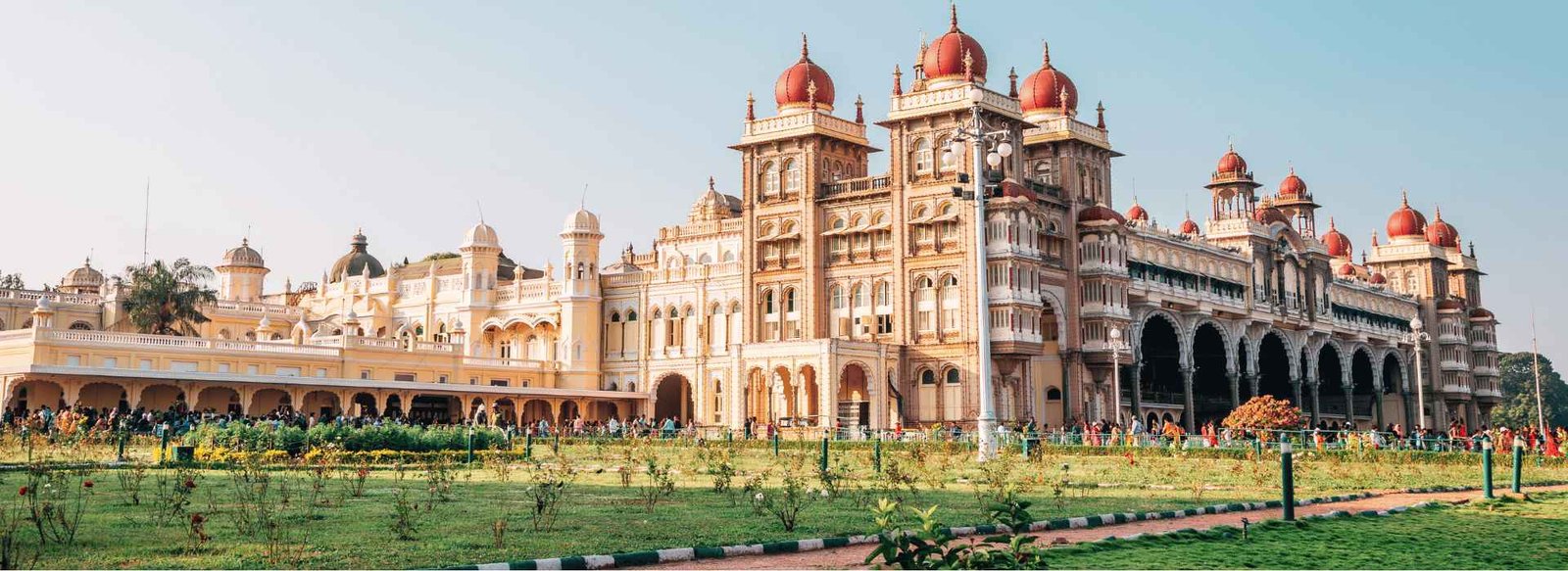
Famously known as The City of Palaces, it wouldn’t be wrong to say that Mysore, currently Mysuru, is one of the most important places in the country regarding ancient reigns. It is replete with the history of its dazzling royal heritage, intricate architecture, its famed silk sarees, yoga, and sandalwood, to name just a few. Located in the foothills of the Chamundi Hills, Mysore is the third most populated city in Karnataka, and its rich heritage draws millions of tourists all year round. The highlight is the majestic Mysore Palace, a UNESCO World Heritage Site, which is a must-visit.
Mysore was one of the three largest Princely States in the erstwhile British Empire of India. To this day, the Mysore Palace stands tall as one of the most spectacular palaces in India. A very famous tourist spot that sees thousands of visitors milling in and around it every day, the Mysore Palace is a mesmerizing example of Indo-Saracenic architecture, every inch of the palace drips with opulence and intricate details, and every room that you visit stands out in terms of its elaborate architecture, beautiful paintings, rich colours and stained-glass windows. On every Sunday, and during the Dussehra celebrations, the palace is spectacularly lit up once dusk falls.
Mysore Palace
An incredibly breathtaking example of Indo – Saracenic style of architecture, the Mysore Palace is a magnificent edifice located in Mysore in the state of Karnataka. Also known as the Amba Vilas Palace, it is the former palace of the royal family of Mysore and is still their official residence. Mysore Palace was built in the year 1912 for the 24th Ruler of the Wodeyar Dynasty and is counted amongst one of the biggest palaces in the country. The construction of the Mysore Palace was orchestrated by the Maharaja Krishnaraja Wadiyar IV referred as “Rajarishi” (saintly king) by Mahatma Gandhi. It was then further expanded by his son and the last Maharaja of Mysore, Maharaja Jayachamaraja Wadiyar. The facade of the palace is a harmonious blend of Hindu, Muslim, Rajput and Gothic styles which imparts it a regal quality. With the Chamundi Hills towards its eastern side, the spectacle of the Mysore Palace is an enchanting sight to behold. Needless to say, it is the second most visited historical monument visited by both local and foreign tourists after the Taj Mahal. Presently located inside the Old Fort, Mysore Palace is renowned for its light & sound show and vibrant Dussehra celebrations.
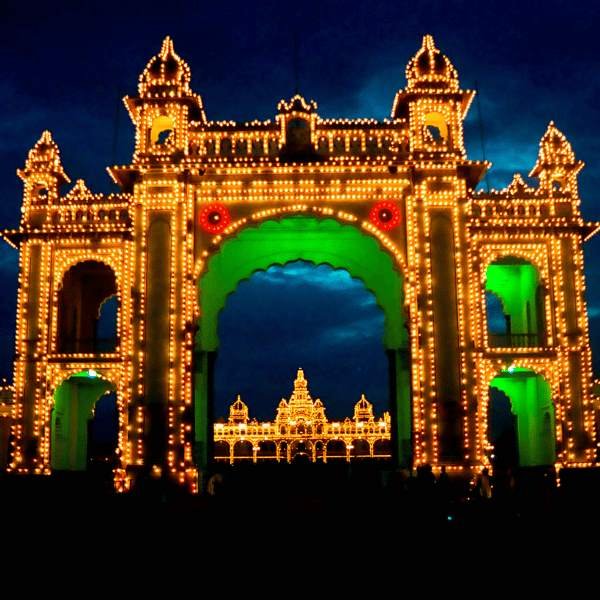
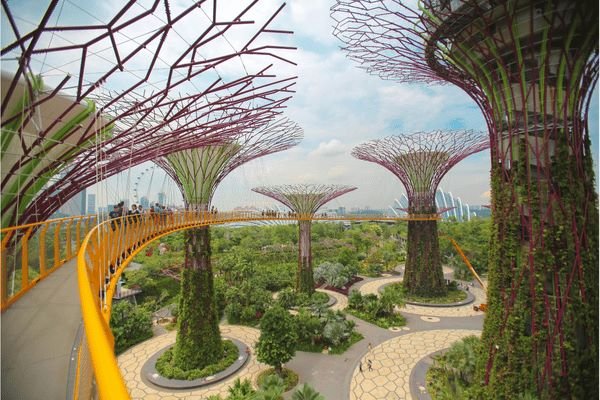
Brindavan Gardens
The Brindavan Gardens, spread over 60 acres, is located at a distance of 21 km away from Mysore. Built across the notable river of India, Cauvery, it took around five years to complete the project. The well-synchronised fountain show with music, boating and well-manicured grass with flowerbeds are some of the top experiences of Brindavan Garden. Constructed in 1932 by the Diwan of Mysore, Sir Mirza Ismail, Brindavan Garden is visited by millions of tourists every year. Divided into two parts, north and south, boating facility offered by the Karnataka State Tourism Development Corporation which connects the two parts along with a walkway bridge.
Somanathapura Temple
On the banks of Holy river Kaveri is a tiny tranquil town of Somanathapura. Here stands the finest and most exemplary monument of Hoysala architecture known as the famous Prasanna Chennakesava Temple or simply the Kesava Temple. Consecrated in the year 1258 CE, it is a Vaishnav Hindu Temple dedicated to might and beauty of Lord Krishna (Chenna= Beautiful and Kesava= Krishna). Tourists from near and far come to visit the temple to get a view of the beautiful place. The Chennakesava temple is one of the 1500 Temples built by the Hoysala Empire kings in different parts of their kingdom, and is said to be the climax development in Hoysala temple style and yet is unique in many other ways.
A classic example of the famous Hoysala architecture, and is one of the three temples of the kind to be nominated in the Unesco World Heritage list. Unfortunately, this temple is no longer used as a place of worship because the idols have been broken and desecrated by the invading Muslim armies. However, the beauty of the temple still charms thousands of visitors who visit the site to witness the magnificent artistic and engineering achievements of the era, to seek the Lord’s blessing and admire the delicate carvings and sculptures, whose beauty is unequal and as unique as the God that it houses.
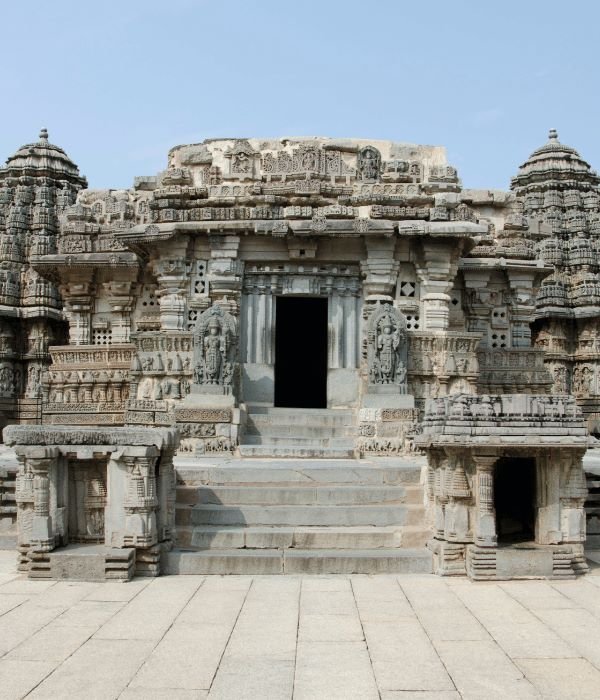
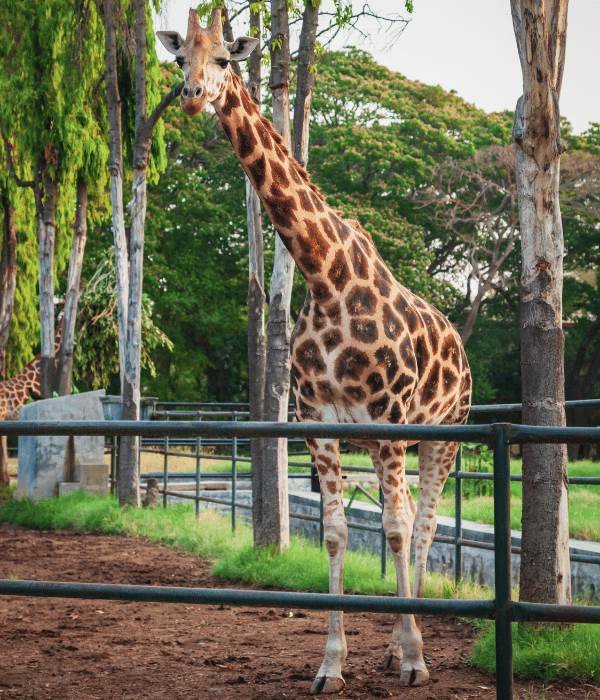
Mysore Zoo
Sri Chamarajendra Zoological Gardens, also known as the Mysore Zoo is one of the best zoological gardens in India. Maharaja Chamaraja Wodeyar established this Zoo in the year 1892 for the Royals. Furthermore, after the attainment of freedom, it was handed over to the Department of Parks and Gardens of the State Govt. The Zoo’s meticulous planning is responsible for making it a special zoological garden. It tends to create a natural habitat for the animals in it. From Big to small cats, Aquatic to terrestrial birds, and Primates to reptiles, one Hundred and Sixty-Eight species find their place in this zoo. The world’s first caesarian section delivery performed on an elephant in Mysore zoo gave it global fame and recognition. Located near the palace in Mysore, The Zoological Garden covers an area of 157 acres. It is one of the oldest and most famous zoos in India. It plays the role of an orphanage to the abandoned animals. Various exhibitions are regularly held here with an insect exhibition stealing the show. Following this, the Zoo carries forward certain Education Programmes such as Youth Club activities, Literary Competitions, and Summer Camp activities. The Karanji Lake was put under Zoo jurisdiction in 1976 and since has been a calm and serene place for boating.
Shuka Vana
Home to over 2000 birds, the Shuka Vana in Mysore is a must visit for ornithophiles and nature lovers. With over 450 varied species, this striking 50m high aviary spanning an area of 1 acre currently holds the record for most bird species in an aviary in the Guinness Book of World Records. This unique park, commonly known as parrot park, is a part of the Avadhoota Datta Peetham in the Sri Ganapathi Sachidananda Ashram, and also serves as a rehabilitation centre for abused, injured and abandoned birds. One can find many rare species of parrots flying around this beautiful enclosure.
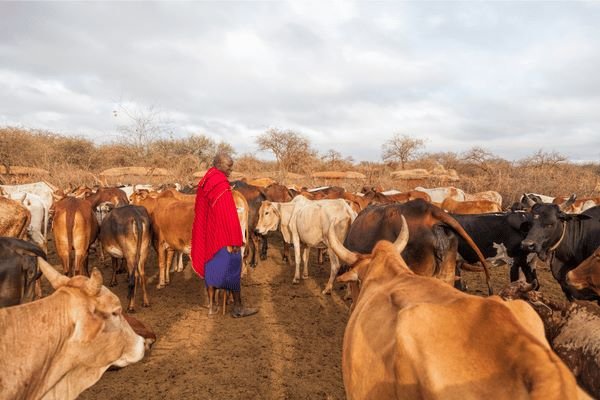
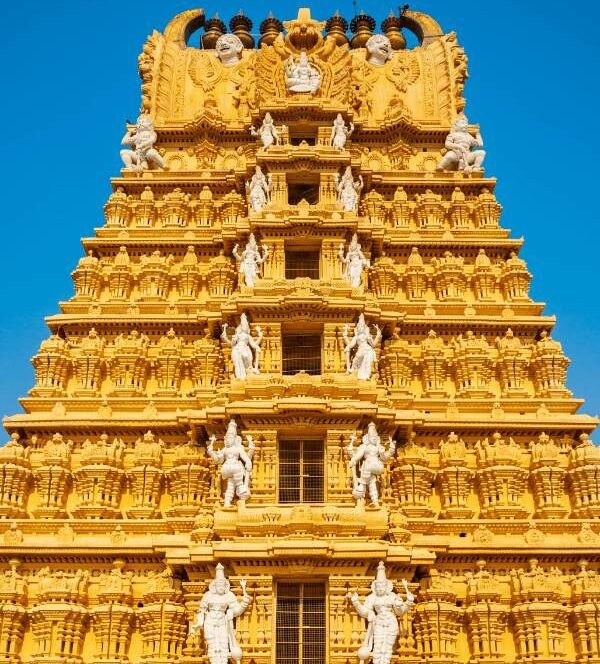
Chamundeshwari Temple
The Chamundeshwari Temple is a traditional Hindu temple located on the eastern edge of Mysore at the height of 1000ft on the Chamundi hills. Dedicated to and named after goddess Durga, the temple also has statues of Nandi and Mahishasura, the demon. Being one of the oldest temples in the palace city of Mysore, the temple is a must-visit attraction for the travellers. The Chamundeshwari Temple is considered as a Shakti Peetha and is one among the 18 Maha Shakti Peethas. Located atop the Chamundi hills, the temple is usually not too crowded. The Chamundeshwari temple also has statues of the demon Mahishasura; you can even see the enormous statues from the way driving up to the temple. The temple also has a Nandi statue, which is that of a cow and holds great importance in the Hindu mythology. The view from the temple is stunning, as you can see many significant structures of the city including the Lalitha Mahal Palace. The temple has also been declared as the No Plastic Zone, thus making a huge contribution to the conservation of our environment by curbing the use of plastics and dumping of hazardous materials.

